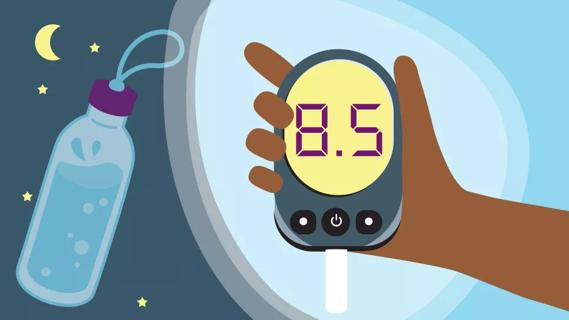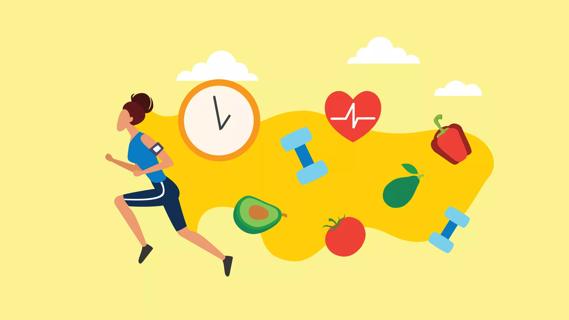An expert breaks down how and why people try it

The diet and nutrition world is full of trends, and one that’s been gaining momentum is intermittent fasting. As intermittent fasting has grown in popularity, more data is rolling out that, in some cases, might support intermittent fasting as more than just a fad.
Advertisement
Cleveland Clinic is a non-profit academic medical center. Advertising on our site helps support our mission. We do not endorse non-Cleveland Clinic products or services. Policy
To better understand intermittent fasting, the types, and the pros and cons, we spoke to registered dietitian Anna Taylor, RD.
Intermittent fasting is when you alternate between periods of eating and fasting. This type of eating is often described as “patterns” or “cycles” of fasting.
Intermittent fasting isn’t about starving yourself — it’s about cutting way back on calories for short time periods. The belief is that your body becomes satisfied with smaller portions while also reducing cravings for unhealthy snack foods. That is, as long as you maintain a healthy diet while trying it all out.
There are several effective approaches, but it all comes down to personal preference. “If you want to give intermittent fasting a try, be prepared to figure out what works best for you,” says Taylor. “It might take some trial and error first.”
Some people find it easy to fast for 16 hours and confine meals to just eight hours of the day, such as 9 a.m. to 5 p.m., while others have a hard time and need to shorten their fasting window, explains Taylor.
How to intermittent fast is important because you want to maintain proper nutrition in your overall diet and not put yourself at unnecessary risk. “Weight loss is never a one-size-fits-all approach,” says Taylor. “Intermittent fasting may be sustainable for some people, while others find that this approach just isn’t for them.”
Advertisement
If you want to try intermittent fasting, you’ll first need to figure out how you’re going to incorporate this style of eating into your life, especially when it comes to things like social events and staying active, she advises.
Ready to explore your options? Here, Taylor explains some of the most popular intermittent fasting methods.
In this option, you have set fasting and eating windows. For example, you fast for 16 hours of the day and are able to eat for only eight hours of the day.
Since most people already fast while they sleep, this method is popular. It’s convenient, as you extend the overnight fast by skipping breakfast and not eating until lunch. This form of fasting is a safer bet for many people who are interested in trying intermittent fasting for the first time,” says Taylor.
Some of the most common ways are:
This method of intermittent fasting can be repeated as often as you’d like or even done once or twice a week — whatever your personal preference is.
Finding the right eating and fasting windows for this method might take a few days to figure out, especially if you’re very active or if you wake up hungry for breakfast. But, Taylor says, it’s important that the majority of your calories are taken in before it’s dark out.
“People tend to select more calorie-dense, low nutrient foods at night. This also gives blood sugars a chance to normalize while people are more active, before retiring for bed,” she says.
This approach to intermittent fasting focuses on capping your calories at 500 for two days a week. During the other five days of the week, you maintain a healthy and normal diet.
On fasting days, this approach usually includes a 200-calorie meal and a 300-calorie meal. It’s important to focus on high-fiber and high-protein foods to help fill you up and keep calories low when fasting.
You can choose whichever two fasting days (say, Tuesdays and Thursdays) as long as there is a non-fasting day between them. Be sure to eat the same amount of food you normally would on non-fasting days.
This variation involves “modified” fasting every other day. For instance, limit your calories on fasting days to 500 ― or about 25% of your normal intake. On non-fasting days, resume your regular, healthy diet. (There are also strict variations to this approach that include consuming 0 calories on alternate days instead of 500.)
An interesting note: One study showed people following this pattern of intermittent fasting for six months had significantly elevated LDL (or bad) cholesterol levels after another six months off the diet.
Advertisement
This method involves fasting completely for a full 24 hours. Often, it’s only done once or twice a week. Most people fast from breakfast to breakfast or lunch to lunch. With this version of intermittent fasting, the side effects can be extreme, such as fatigue, headaches, irritability, hunger and low energy.
If you follow this method, you should return to a normal, healthy diet on your non-fasting days.
Intermittent fasting is not safe for some people, including people who are pregnant, children, people at risk for hypoglycemia or people with certain chronic diseases. People who menstruate, such as pre-menopausal females, should be cautious, too, as fasting can impact your hormones.
“If you’re at risk for an eating disorder, you shouldn’t attempt any sort of fasting diet,” advises Taylor. “Intermittent fasting has also been known to increase the likelihood of binge eating in some people because of the restriction.”
If you’re interested in trying intermittent fasting, you should also be aware of some not-so-pretty side effects. It can be associated with irritability, low energy, persistent hunger, temperature sensitivity, and poor work and activity performance.
Ultimately, you should contact your healthcare provider and discuss these options. They know your health better than anyone else and can offer the right guidance on whether or not any of these intermittent fasting options are right for you.
Advertisement
Advertisement
Learn more about our editorial process.
Advertisement

Planning ahead, checking in with your care team and being vigilant about blood sugar monitoring can help ensure a safe fast

It’s best to exercise before or after your fast, instead of during it

Plan ahead by hydrating, cutting back on sugar and managing medications

Fasting can significantly impact your hormones — proceed with caution

This short-term diet is for those who want to lose a significant amount of weight quickly

A cardiologist's perspective on pros and cons of fasting

'Early time-restricted feeding' can produce health + weight-loss benefits

The short answer from a registered dietitian

Type 2 diabetes isn’t inevitable with these dietary changes

Applying a hot or cold compress can help with pain